Cleveland Clinic News Service | 216.444.0141
We’re available to shoot custom interviews & b-roll for media outlets upon request.
CCNS health and medical content is consumer-friendly, professional broadcast quality (available in HD), and available to media outlets each day.

For the first time in his life, Sij Hemal flew first class during a recent trans-Atlantic flight on Air France.
But it was far from a restful or luxurious experience.
Dr. Hemal, 27, a second-year urology resident at Cleveland Clinic’s Glickman Urological and Kidney Institute, began the Paris-to-New York segment of his day-long journey from New Delhi, India, in the main cabin. Seated, by happenstance, next to a pediatrician, he was enjoying a relaxing flight on December 17, watching a movie and awaiting a glass of champagne.
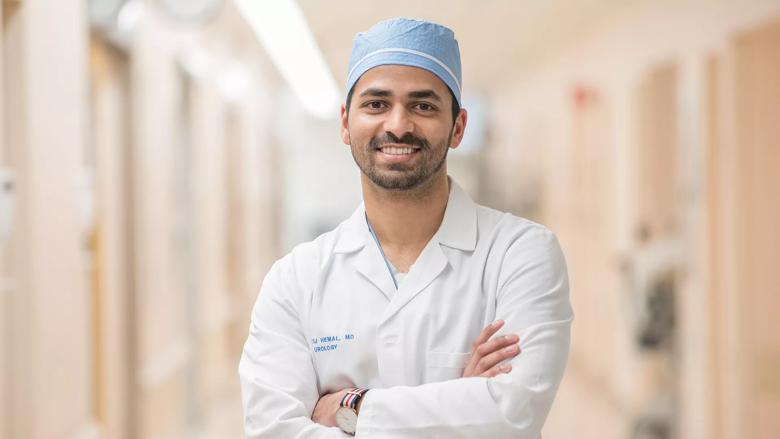
“I was pretty tired from jet lag,” recalls Dr. Hemal, who a day earlier had attended his best friend’s wedding. “I thought I’d just have a drink and fall asleep. As it turned out, I’m glad I didn’t drink anything.”
That’s because a fellow passenger – 41-year-old Toyin Ogundipe, a banker who resides in both the United Kingdom and Nigeria – went into labor about midway into the flight, as the jet skirted the southern coast of Greenland, 35,000 feet below. An emergency landing would require a two-hour diversion to a U.S. military base in the Azores Islands, so Dr. Hemal – who volunteered to assist Toyin – recommended to the pilot they continue to JFK International Airport, still four hours away.
“Her contractions were about 10 minutes apart, so the pediatrician (Dr. Susan Shepherd) and I began to monitor her vital signs and keep her comfortable,” explains Dr. Hemal.
Dr. Shepherd is a US pediatrician working for Alliance for International Medical Action. She was returning home from a professional meeting in Dakar.
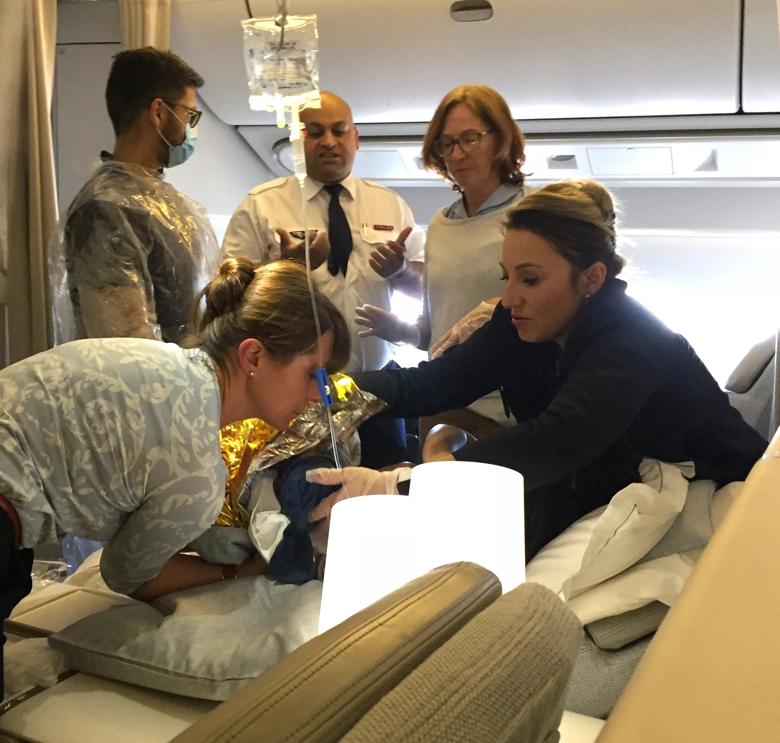
They also suggested Toyin be moved to the roomier first-class section, which had very few passengers. “My ticket to first class!” he adds, with a laugh.
While the flight’s air hostesses tended to Toyin’s traveling companion, her 4-year-old daughter, Amy, the doctors used instruments and supplies in the flight’s scanty medical kit to routinely check her vital signs, including blood pressure, oxygen rate and pulse. Very soon, however, their activities heightened.
Within the course of an hour, Toyin’s contractions accelerated; they occurred seven, then five and finally two minutes apart. “That’s when we knew we were going to deliver on the plane,” Dr. Hemal recounts.
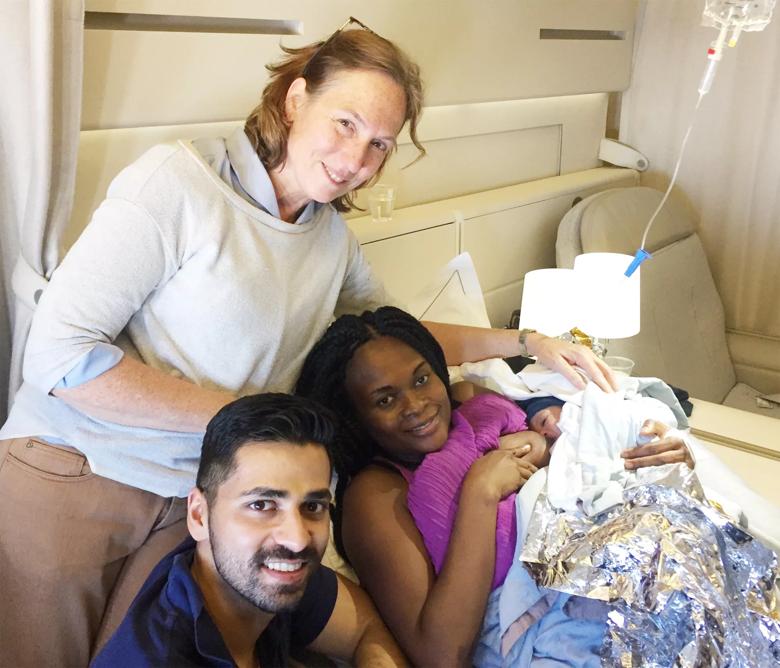
RELATED: Mom’s Cancer Removed Through New Technique 6 Weeks After Baby’s Birth
Although his practice area is urology, Dr. Hemal delivered seven babies during medical school – although never on the floor of a jetliner. “We’re trained to stay calm and think clearly in emergency situations,” he adds. “I just tried to think ahead to what might go wrong, and come up with a creative solution.”
Toyin recalls being rather composed throughout the delivery, thanks to the calm manner of the two doctors and the professional treatment they provided: “I was relaxed because I knew I was in safe hands. They did everything a doctor or midwife would have done if I was in the labor room in the hospital. Even better, if you ask me.”
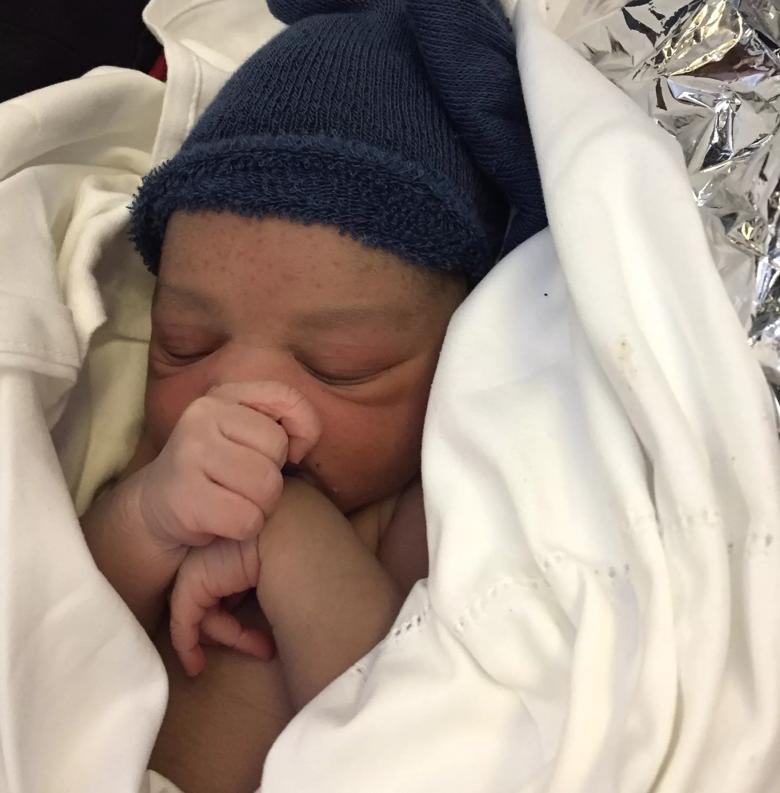
After about 30 minutes of pushing, Toyin gave birth to a boy, whom she named Jake. Dr. Hemal safely removed the placenta, used a surgical clamp (and a shoestring) to tie off the umbilical cord, and then cut it off with a pair of scissors. Dr. Shepherd assessed Jake’s health, which appeared to be normal; soon, he began nursing on his mother.
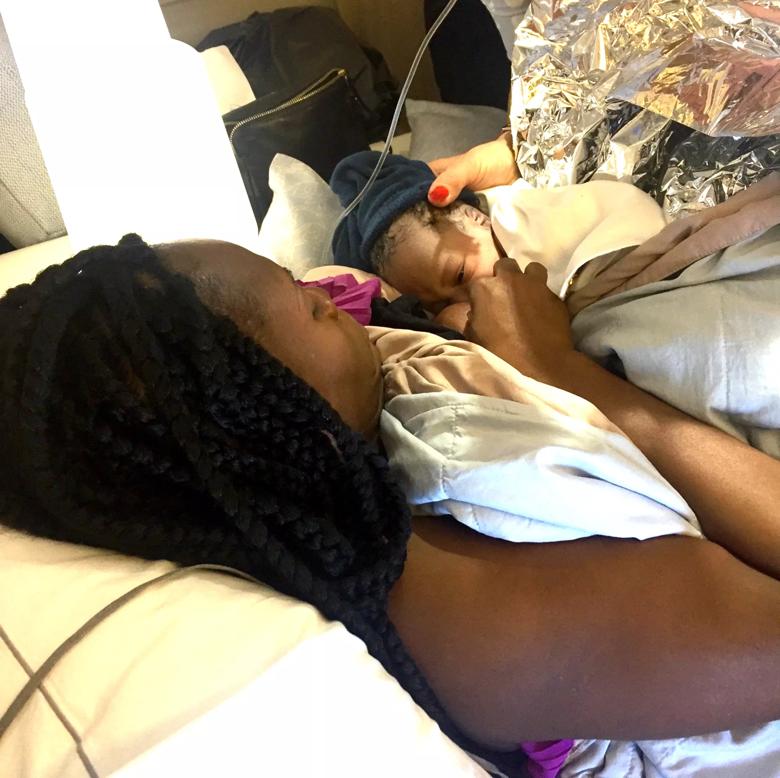
Upon arrival at JFK, Toyin, Jake and Amy were whisked away by ambulance to Jamaica Hospital Medical Center, just four miles from the airport. Toyin was released later that day, and is recovering – with her children – at the home of friends in New Jersey.
RELATED: Baby with Rare Disease Goes Home after Successful Bone Marrow Transplant
Dr. Hemal still had one more leg on his long, international journey – and officials escorted him briskly through immigration and to his gate. He made it on his flight to Cleveland, which – happily – was uneventful. Soon after, he received both a travel voucher and that long-awaited bottle of champagne from Air France. He has also stayed in frequent contact with both Toyin and Dr. Shepherd.

“So much could have gone wrong, but it didn’t. Being on that particular flight, sitting next to a pediatrician … it’s like it was destiny,” avows Dr. Hemal. “Thanks to God, everything worked out.”
Cleveland Clinic is a nonprofit multispecialty academic medical center that integrates clinical and hospital care with research and education. Located in Cleveland, Ohio, it was founded in 1921 by four renowned physicians with a vision of providing outstanding patient care based upon the principles of cooperation, compassion and innovation. Cleveland Clinic has pioneered many medical breakthroughs, including coronary artery bypass surgery and the first face transplant in the United States. Cleveland Clinic is consistently recognized in the U.S. and throughout the world for its expertise and care. Among Cleveland Clinic’s 82,600 employees worldwide are more than 5,786 salaried physicians and researchers, and 20,700 registered nurses and advanced practice providers, representing 140 medical specialties and subspecialties. Cleveland Clinic is a 6,728-bed health system that includes a 173-acre main campus near downtown Cleveland, 23 hospitals, 280 outpatient facilities, including locations in northeast Ohio; Florida; Las Vegas, Nevada; Toronto, Canada; Abu Dhabi, UAE; and London, England. In 2024, there were 15.7 million outpatient encounters, 333,000 hospital admissions and observations, and 320,000 surgeries and procedures throughout Cleveland Clinic’s health system. Patients came for treatment from every state and 112 countries. Visit us at clevelandclinic.org. Follow us at x.com/CleClinicNews. News and resources are available at newsroom.clevelandclinic.org.
Editor’s Note: Cleveland Clinic News Service is available to provide broadcast-quality interviews and B-roll upon request.